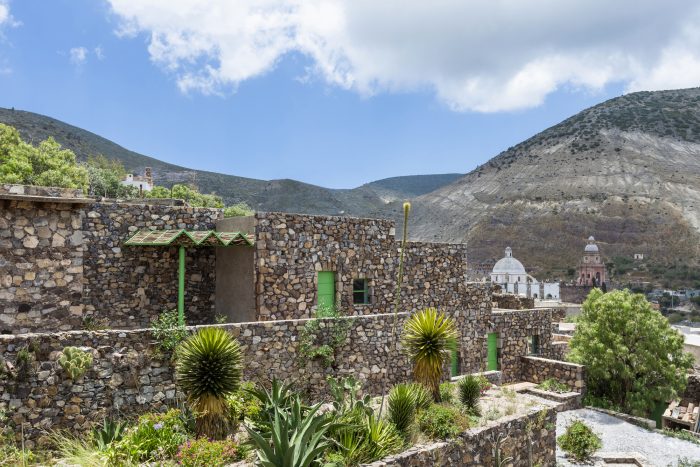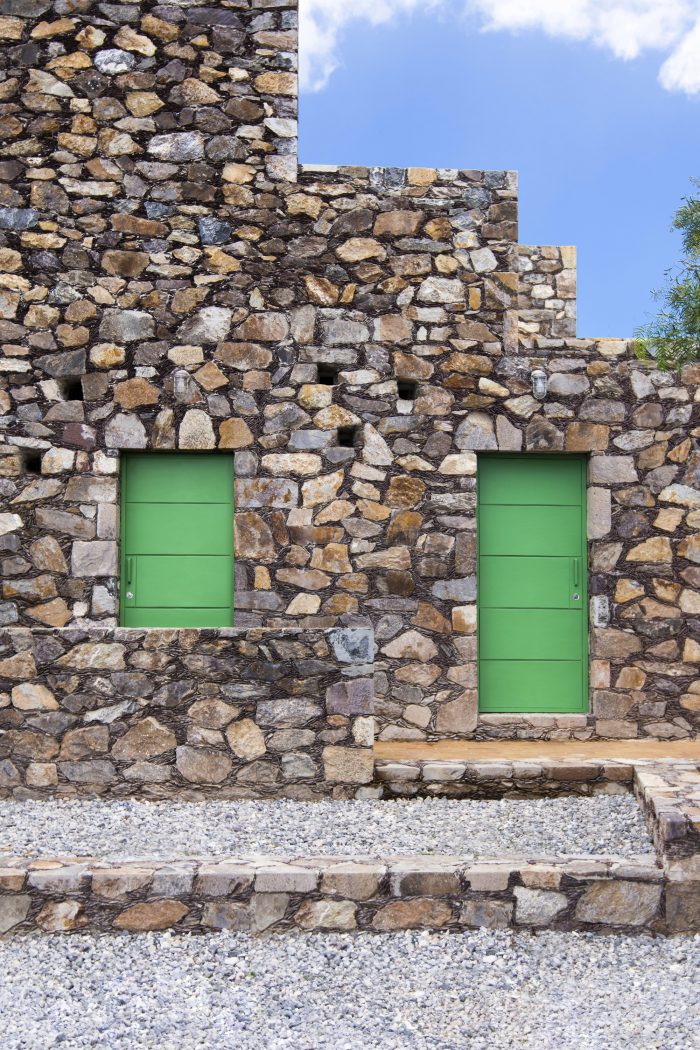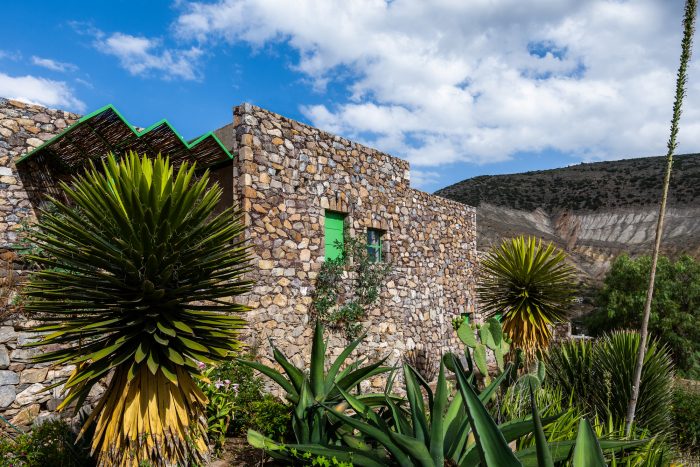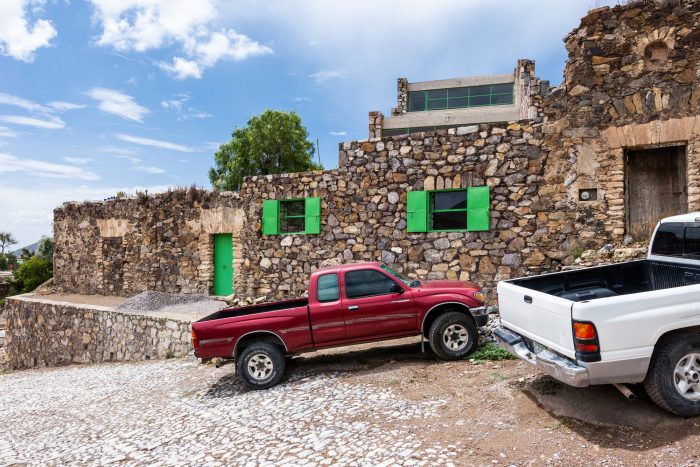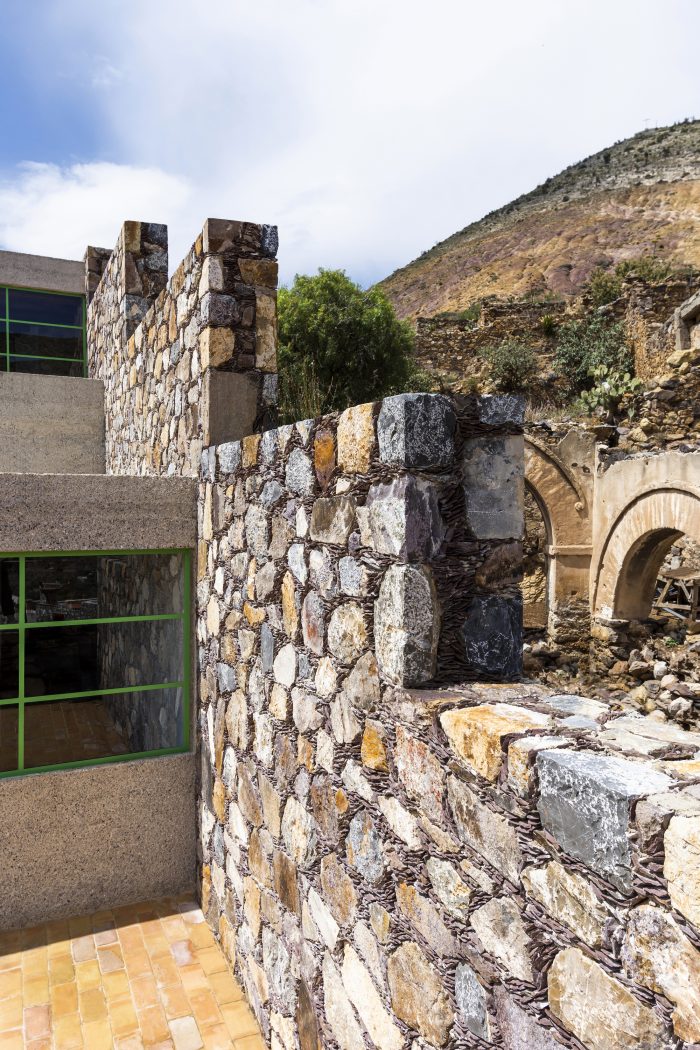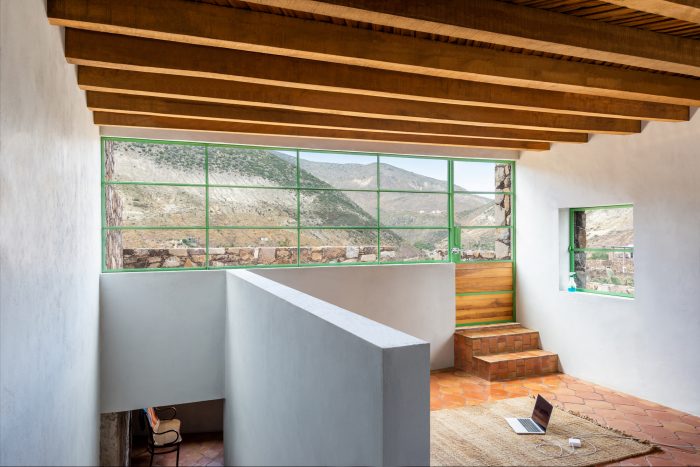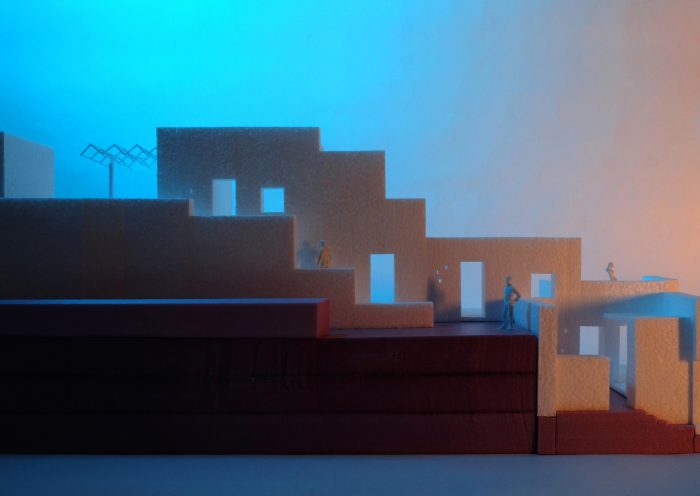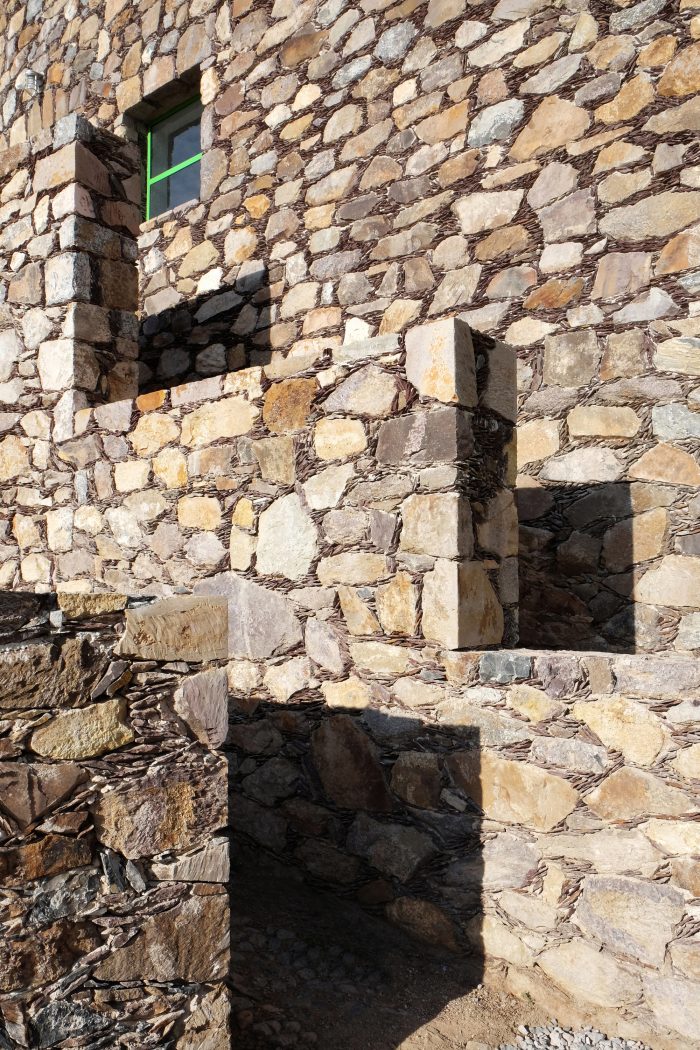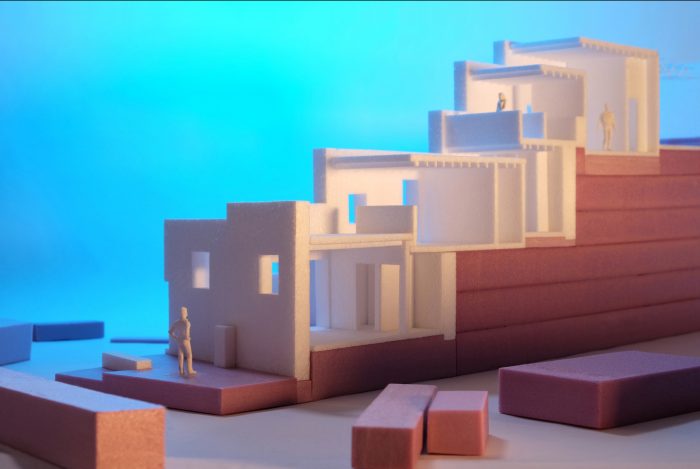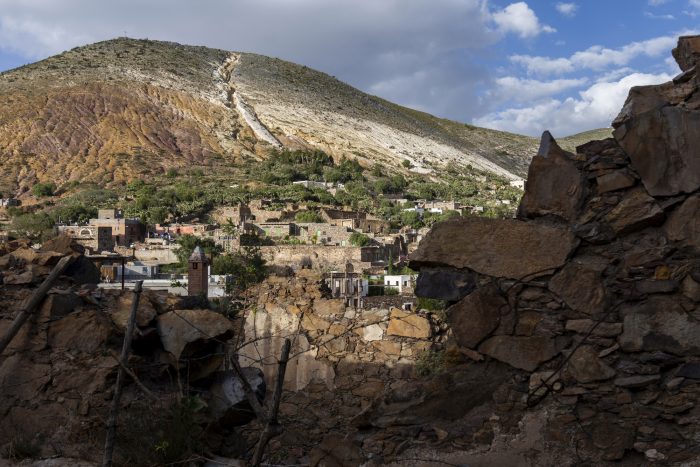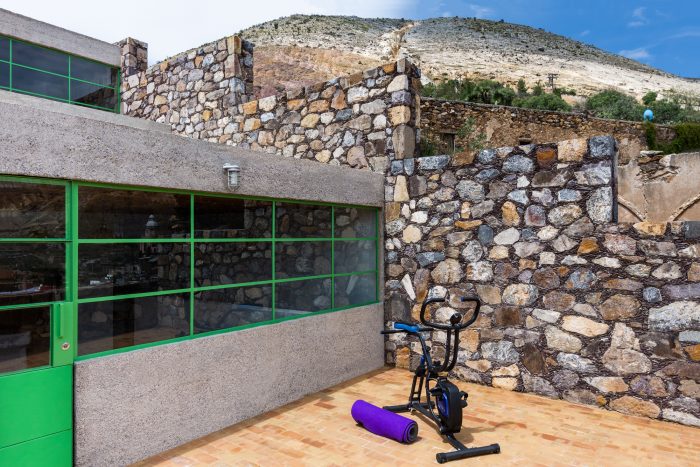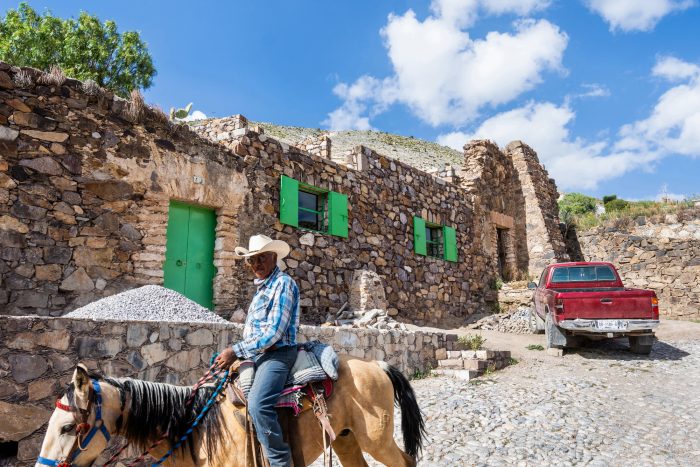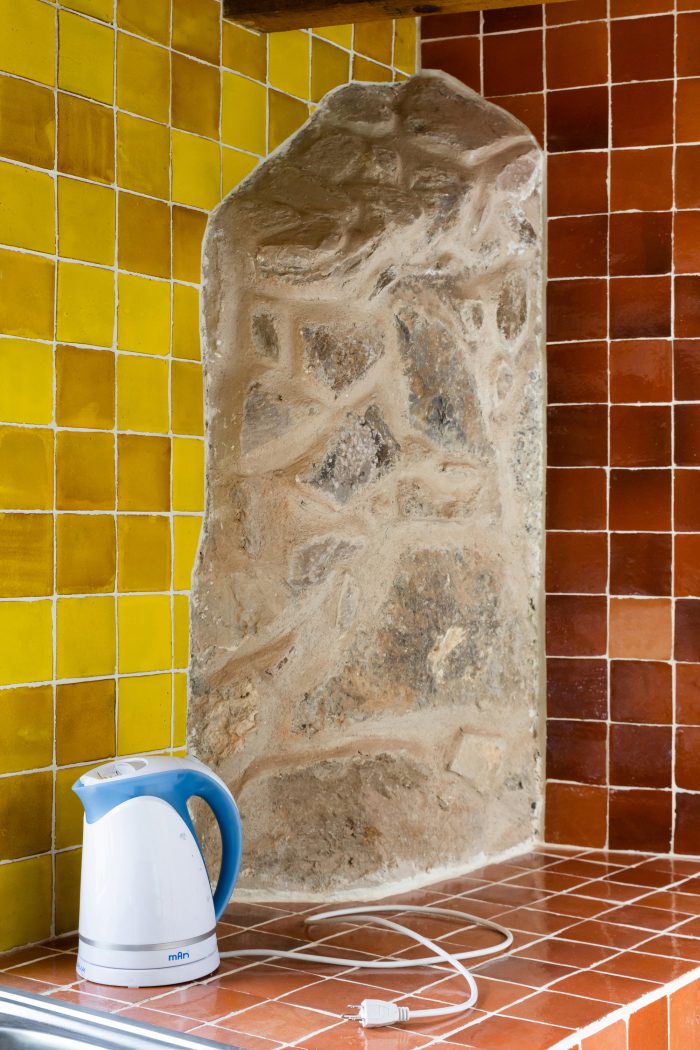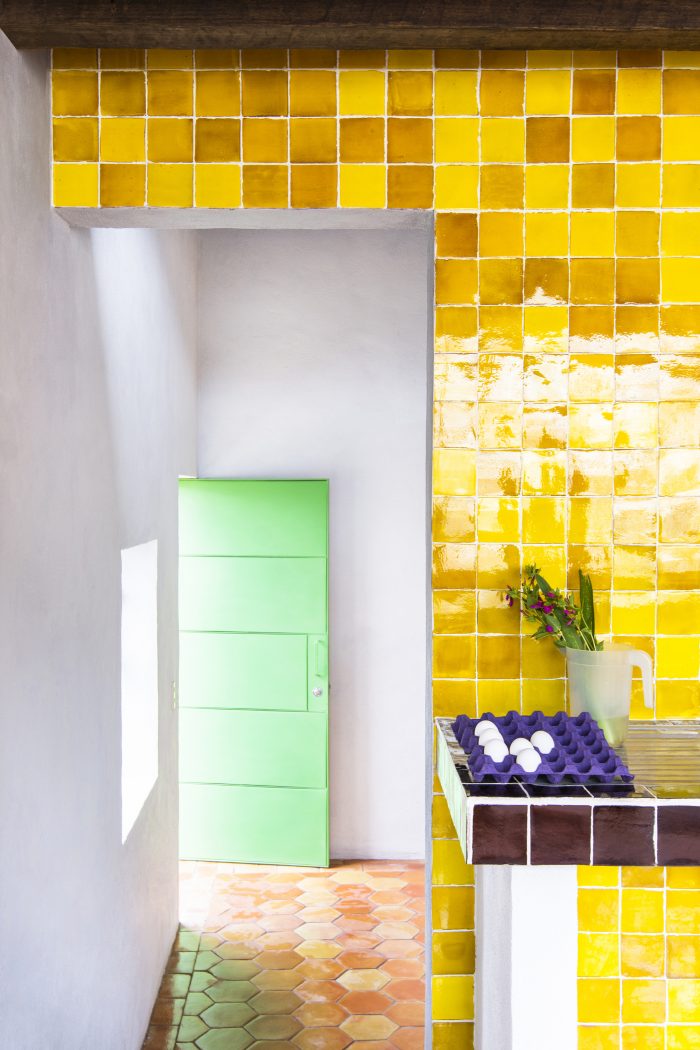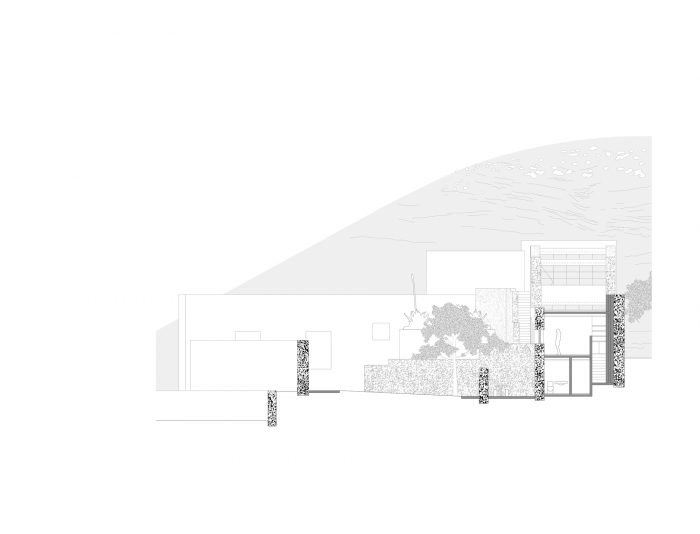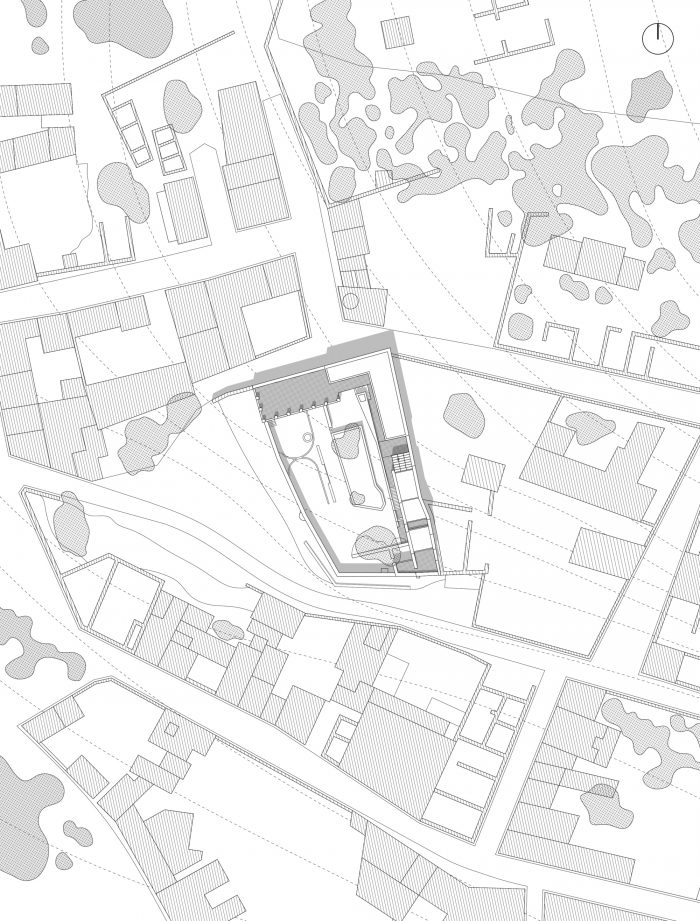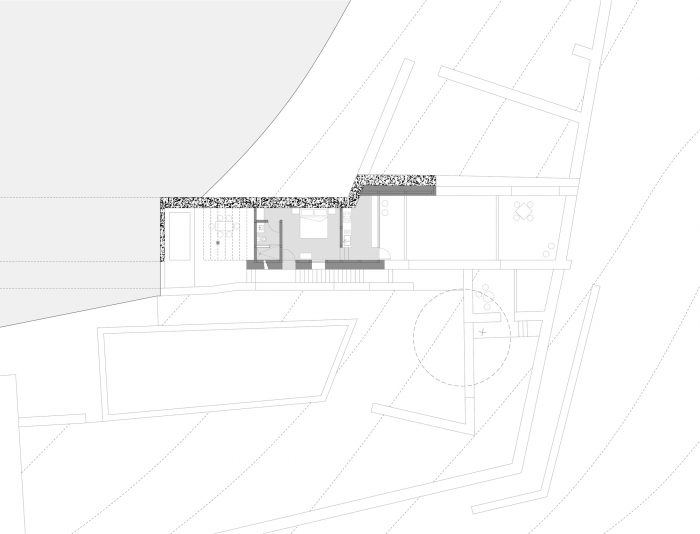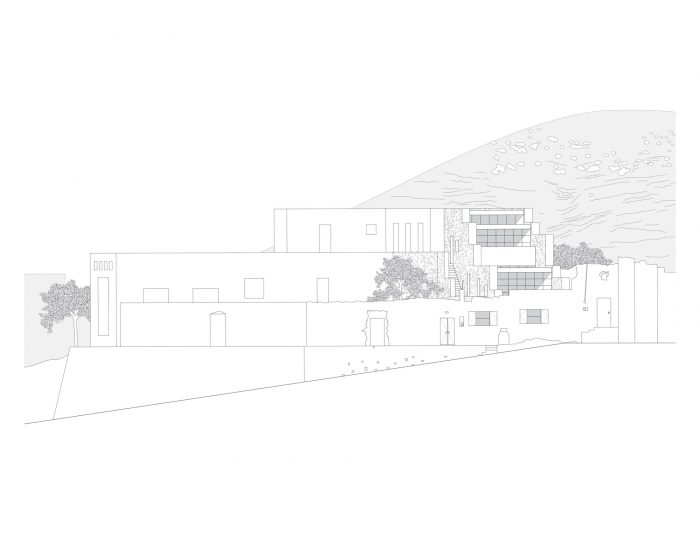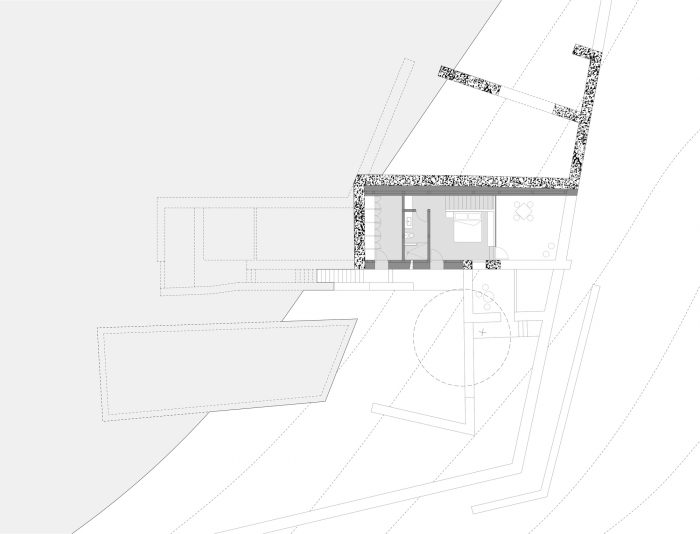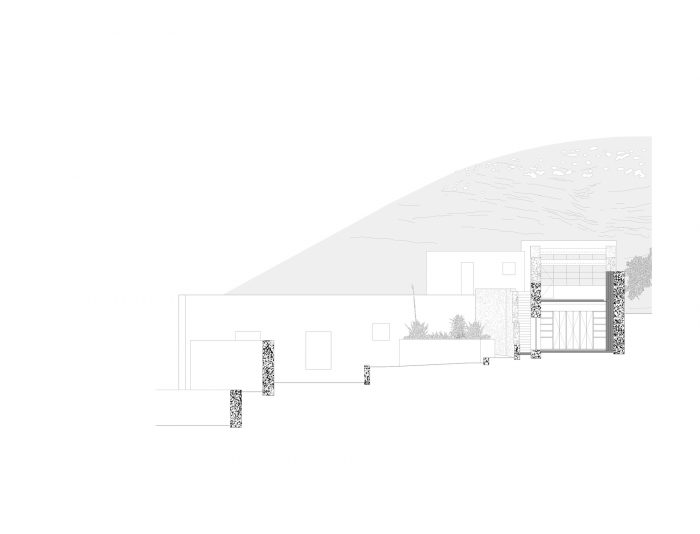Casa Georgina于2020年秋季完工,由两个公寓单元组成,建在墨西哥北部圣路易斯波托西州Sierra de Catorce山脉的陡峭山坡上。该项目位于一个围墙花园内,其中包含一座现有的房屋,并建立在一系列的石头废墟上,通过加减法的游戏来吸引他们。三面阶梯状的墙组织了设计方案:第一面墙包含外部通道;第二面墙框住了内部生活空间;第三面墙将项目与邻近的房产隔开。这些墙体保护了室内空间免受来自东、西两面强烈的阳光直射,并构造了一个梯形体量的集合。屋顶天井向南开放,并提供周围景观的广阔视野。
Casa Georgina, completed in the fall of 2020, is composed of two apartment units built into the steep slope of the Sierra de Catorce mountains in the northern Mexican state of San Luis Potosí. The project sits within a walled garden that contains an existing house and builds upon a series of stone ruins, engaging them through a play of addition and subtraction. Three stepped walls organize the design scheme: wall one contains exterior circulation; wall two frames the interior living spaces; and wall three divides the project from the neighboring property. These walls protect interior spaces from intense direct sunlight from the east and west and structure a collection of terraced volumes. Roof patios open to the south and provide expansive views of the surrounding landscape.
Casa Georgina位于Real de Catorce,这是一个历史悠久的银矿小镇,成立于17世纪末,符合严格的建筑法规,旨在保持该地独特的美学特征和建筑特征。除了高度和视线限制外,建筑规定还规定所有外墙都要用当地的石材建造,通过传统的建筑技术来体现小镇的特色。与项目的方案开发同步,这些建筑规定在细节的尺度上启动了即时的设计考虑。这包括在现场对现有的实心石墙进行修复、加固和延伸,以及使用一种经过修改的、更经济的施工方法建造新的墙体,包括石块、现浇混凝土和CMU块。
Located in Real de Catorce, a historic silver mining town established in the late 1700s, Casa Georgina complies with strict building regulations that aim to maintain the site’s unique aesthetic character and architectural identity. In addition to height and sight-line restrictions, building mandates specify that all exterior walls be constructed with local stone, through a traditional building technique that is representative of the town. In tandem with the schematic development of the project, these building regulations initiated immediate design considerations at the scale of the detail. This included the repair, reinforcement, and extension of existing, solid stone walls on site, as well as the construction of new walls using a modified and more economical construction method involving stone, cast concrete, and CMU blocks.
由此产生的项目是一个调解项目:在人类代理人(客户、建筑师、政府官员和当地居民)、形式和景观、现有场地元素和未来项目、传统建筑技术和当代建筑方法之间进行调解。
The resulting project is one of mediation: between human agents (client, architect, government officials, and local population), form and landscape, existing site elements and future project, traditional building techniques, and contemporary construction methods.
建筑师:Departamento del Distrito
面积:238平方米
年份:2020年
摄影:Adriana Hamui
制造商:AutoDesk, Adobe Suite, Helvex, Robert McNeel & Associates.
首席建筑师:Francisco Quiñones, Nathan Friedman
客户:Georgina Landa
合作者:Rafael Ibarra
城市:Real de Catorce
国家:墨西哥
Architects: Departamento del Distrito
Area: 238 m²
Year: 2020
Photographs: Adriana Hamui
Manufacturers: AutoDesk, Adobe Suite, Helvex, Robert McNeel & Associates
Lead Architects:Francisco Quiñones, Nathan Friedman
Clients:Georgina Landa
Collaborators:Rafael Ibarra
City:Real de Catorce
Country:Mexico


